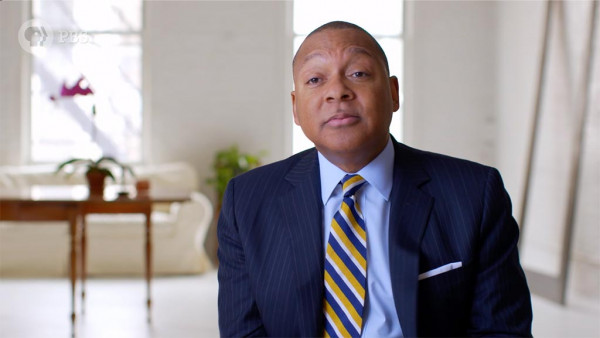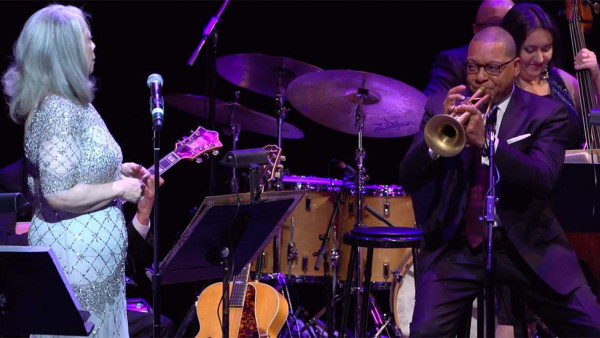Ellison Recalled as an Artist of Great Range
Hundreds of people who cared about the novelist Ralph Ellison traveled to Washington Heights yesterday to pay their respects to his life and art. They received in return glimpses, small and affectionate, of the man’s expansive soul.
At a memorial tribute at the American Academy of Arts and Letters, a few blocks from the apartment on Riverside Drive where Ellison lived and, on April 16, died at the age of 80, the authors Toni Morrison, Albert Murray and Stanley Crouch and the jazz trumpeter Wynton Marsalis gathered with others to offer their personal songs of praise. Letters From Italy Mr. Murray shared letters that Ellison, the author of the novel “Invisible Man,” had written to him decades earlier. In one, written from Rome in 1955, Ellison said he had not done much writing lately, only “an article on music and some letters.”
“For at the end of our first week we were carried on a tour of northern Italy,” Ellison wrote. “We went by car and saw the art of Orvieto, Perugia, Urbino, Pisa, Assisi, Rimini, Ravenna, Florence, Siena and many places in between. . . . Some of the classical people here are snobbish about this mess, but it belongs to anyone who can dig it, and I don’t mean picking around in ruins, as important as that is. As soon as I can discover who knows what around here, I plan to get a reading list so that I can orient myself in relation to the classical background.”
This man who loved the classics, and whose own work entered that category, also loved pigs’ feet. In a letter to Mr. Murray from Rome in 1956, Ellison wrote about how his wife, Fanny, found the delicacies easily enough, but could not find the pickling spice needed to prepare them.
“The poor girl walked her feet off trying to find them because she knew that I would be an evil S.O.B. if I didn’t have all the ingredients for this ceremonial dish,” Mr. Murray read yesterday as Mrs. Ellison listened from the front row of the academy’s auditorium. “So she came in late, with only a bay leaf and allspice. And just as she suspected, I was fit to be tied. . . . The next time somebody says something to me about Roman culture, they’re going to have to get a cop to stop me from talking. Imagine a city without pickling spice!” A Musician, Too
Mr. Marsalis recalled hearing Ellison play the trumpet, then played “Stardust,” because Ellison loved Louis Armstrong and “Stardust” was one of Armstrong’s famous recordings. Joined by Cyrus Chestnut on piano and Ali Jackson on drums, the trumpeter then evoked the feel of a New Orleans funeral with Duke Ellington’s “Black and Tan Fantasy.”
“Ralph had an opportunity to play with Duke,” Mr. Marsalis said of Ellison, who began playing the trumpet at the age of 8, “but he missed the gig. That’s why he didn’t end up being a trumpet player; and he could play, too.”
Mr. Crouch also spoke of Ellison and music. He described the author as one who “floated above the petty darknesses of race and opportunism that have brought so many devitalized dissonances to the orchestra of our national life.”
“He was listening to a music more celestial and more in touch with the earth of our culture,” he continued, “the score written in the sky and in the mud, where the tales of heartbreak and hope, courage and cowardice, ambivalence and absolute accuracy, tell us of the cosmopolitan bloodlines that make us Americans: part Yankee, part Indian, part pioneer, part Negro, part Christian, part Jewish, part Hispanic, part Asian.” Erudition and Humor
Harold Evans, the president and publisher of Random House, which published “Invisible Man” in 1952, remembered an “elegant” man who at his 80th birthday party enthralled those in attendance with discourses on a wide range of topics, from Dizzy Gillespie to the American South to T. S. Eliot.
Ms. Morrison spoke of a man of humor and generosity, of intelligence, integrity and principle. She said she hoped those like her who had been buoyed by Mr. Ellison’s brilliance would be “worthy custodians” of what she described as “the blessing of his work and the beauty of his life.”
By Sheila Rule
Source: The New York Times


